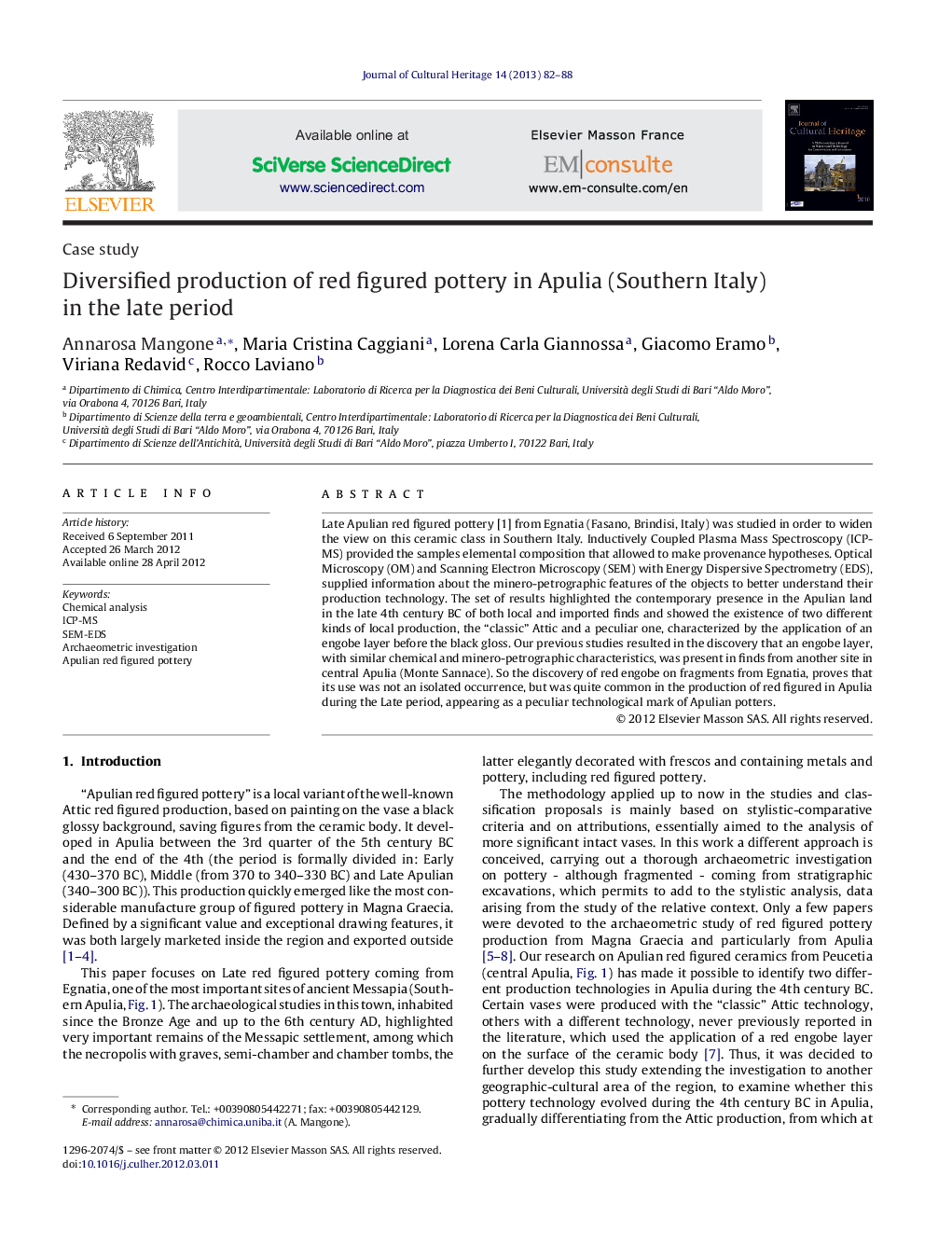| Article ID | Journal | Published Year | Pages | File Type |
|---|---|---|---|---|
| 1038286 | Journal of Cultural Heritage | 2013 | 7 Pages |
Late Apulian red figured pottery [1] from Egnatia (Fasano, Brindisi, Italy) was studied in order to widen the view on this ceramic class in Southern Italy. Inductively Coupled Plasma Mass Spectroscopy (ICP-MS) provided the samples elemental composition that allowed to make provenance hypotheses. Optical Microscopy (OM) and Scanning Electron Microscopy (SEM) with Energy Dispersive Spectrometry (EDS), supplied information about the minero-petrographic features of the objects to better understand their production technology. The set of results highlighted the contemporary presence in the Apulian land in the late 4th century BC of both local and imported finds and showed the existence of two different kinds of local production, the “classic” Attic and a peculiar one, characterized by the application of an engobe layer before the black gloss. Our previous studies resulted in the discovery that an engobe layer, with similar chemical and minero-petrographic characteristics, was present in finds from another site in central Apulia (Monte Sannace). So the discovery of red engobe on fragments from Egnatia, proves that its use was not an isolated occurrence, but was quite common in the production of red figured in Apulia during the Late period, appearing as a peculiar technological mark of Apulian potters.
